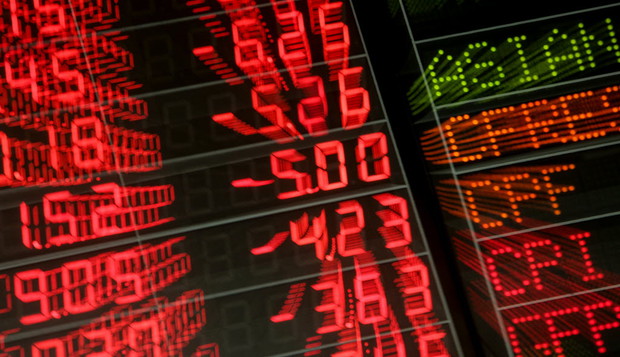As January goes, so goes the year?”
That is the pithy version of the January Barometer. First identified by Yale Hirsch of the Stock Trader’s Almanac, it suggests a correlation between January’s performance and full-year returns. I am not a believer in the many omens Wall Street traders tend to obsess about, including the January Barometer. However, this one is more interesting than most.
We began 2014 with turmoil overseas. Pick a country: China, Turkey, Thailand, Argentina. The Vanguard Emerging Market Index was down 8.6 percent for the month. This spilled over to the US, with markets, which were off by less, but still down. For January, the Standard & Poor’s 500 Index declined 3.46 percent, the Nasdaq Composite Index lost 1.68 percent, while the price weighted Dow fell 5.19 percent.
According to the January Barometer, this now sets us up for a less-than-stellar year. The Stock Trader’s Almanac notes that since 1973, any time the S&P 500 rose during January, the average gain for the broad index the rest of the year was 11.2 percent. When there was a negative January, the rest of the year was little change, up about 0.2 percent.
Lots of analysts, including Ed Yardeni, note the data is statistically significant. But whether it should affect your strategy is an entirely different question. My conclusion is that it shouldn’t — and for a variety of reasons.
Let’s discuss the three biggest factors: probability, causation and false positives.
The first factor is strictly probabilistic: We are attempting to draw conclusions about future returns based on past history. This stands in stark contrast to every prospectus and fund document ever produced, i.e., “past performance is no guarantee of future returns.” That is more than legal boiler plate; it is an acknowledgement that the past is not prologue, and that history doesn’t often repeat. There are no guarantees that the median of all prior years will be the most likely outcome.
The probability statistics also change depending upon your time frame. For example, Moneybeat noted that in the 24 years since 1950 when January was negative, “13 of those 24 years, stocks rose over the final 11 months.” In other words, using the Barometer as a sell signal for the rest of the year is a little worse than a coin flip.
Which leads us to our second issue: correlation versus causation. Unless we can show a causative factor, when we look at historical datum, we may only be seeing a statistical anomaly. Without a cause-and-effect relationship, whether it is truly significant or not remains unknown.
This is the classic statistical error that has befallen many an analyst. What we want to know is whether there is a rational explanation that could explain the causality. Is there some ongoing and repeatable force that is resulting in the correlation that we see? Alternatively, is it merely a coincidence, like having good trading days when you wear lucky socks?
This is where we run into some trouble with the January Barometer: No one has identified a reason why a negative first month of the year would be so significant to returns. Does it follow a change in investor attitudes, or perhaps a shift in risk appetite, or maybe new legislation for taxes that takes place on Jan. 1? Without some rational explanatory basis, we cannot conclude this is anything other than coincidence — a mere correlation without any underlying reason. Like other such random past events, the correlation could simply fade over time.
Last, consider the recent false positives — when a negative return for January was followed by a positive return for the year. (The term false positive refers to the false signal, not monthly or annual returns). January 2014 is the first negative start to a year since 2010 and 2009. Can what happened in those years provide us with any insight?
In 2010, markets fell about 3.7 percent in January, but the S&P 500 had a full-year gain of 14.8 percent. If you followed the January Barometer that year and avoided U.S. equities, you left money on the table. However, you would have missed even more the prior year. In 2009, the S&P 500 fell about 6.3 percent in January and gained almost 26 percent, not including dividends, for the full year.
We also see false positives the other way — when a positive January leads to a negative year. Note the following table:
1946 January +7.0 percent Full year -17.6 percent
1947 January +2.4 percent Full year -2.3 percent
1966 January +0.5 percent Full year -13.5 percent
1987 January +13.2 percent Full year -9.9 percent
1994 January +3.3 percent Full year -4.6 percent
2001 January +3.5 percent Full year -16.0 percent
2011 January +2.3 percent Full year -2.3 percent
All of this leads to the following conclusions. The January Barometer does have statistical significance. However, there are no known reasons or causations for it. It may be nothing more than mere coincidence — we simply don’t know. Following it in recent years has led to some big lost opportunities, especially in 2009 and 2010.
My preference is for rational, evidence based causations for risking capital. The January Barometer does not meet this test.



What's been said:
Discussions found on the web: